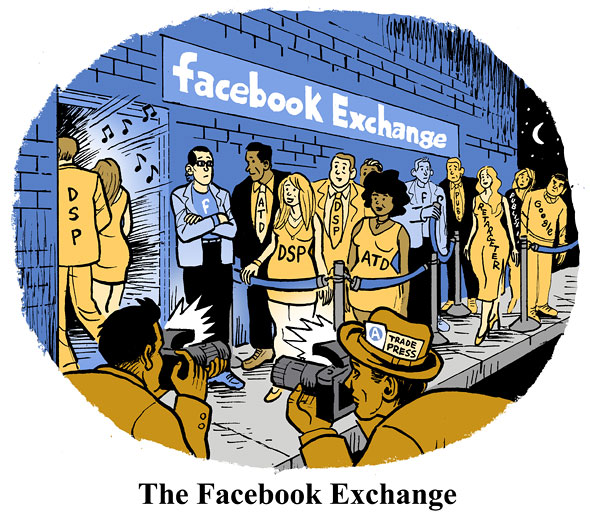
Two weeks ago now, in the wee hours of April 23, the Meta ad platform misfired and blew a hole in the budgets of thousands of advertisers.
It only took a few hours, but tens of millions of dollars, likely even hundreds of millions, were misappropriated by Meta. And the company has been dealing (or not) with the messy fallout ever since.
Meta has acknowledged the issue in two statements.
“A technical issue that has been resolved caused ad delivery issues for some advertisers” was the only comment from April 23.
On May 2, Meta issued this update: “As we continue to investigate the issue and its precise impact on ads, we have determined some ad accounts will be getting compensation.”
Show me the money
The big questions are: When will advertisers be refunded for their account losses? And, how will they be compensated?
Meta’s official statements and form emails to advertisers and agencies stress that “some” accounts will receive refunds and are careful to qualify “if.”
Ad buyers with direct lines of communication to human account reps are at a huge advantage in terms of information and escalating refund requests.
In direct communications, Meta account reps candidly admit the platform had an “error” or “bug” and commit to at least partial refunds. Six agency execs told AdExchanger they have been told to expect around half to two-thirds of their spend from the day to be refunded, although compensation is likely to be Meta ad credits.
But the only official statements from Meta stress that an issue has been resolved without acknowledging that the company messed up, or committing to general refunds.
Refund review
Even though execs know the platform had a widespread glitch, Meta is treating account issues on a case-by-case basis.
Meta hasn’t issued an in-platform notification or alert to affected accounts, nor is there a public blog post. At this point, Meta clearly does not intend to alert all affected advertisers, leaving it up to advertisers to find out about the issue and then bring their complaint to Meta.
For comparison, every account received emails and in-platform notifications prompting advertisers to opt into web-to-app conversion optimization, which was at least one of the Meta ad products that misfired.
Meta also hasn’t set up a special refund review process for this debacle. Internally, Meta execs must surely be in crisis management mode, but there’s no FEMA operations for the victims.
In the past week, many SMB advertisers and agency buyers were dealt a new “point of contact” for account issues. But even that outreach is stilted and tone-deaf.
Two DTC merchants and one agency exec shared their email messages with AdExchanger. Meta reps didn’t mention the catastrophic platform error, instead framing it as a chance to discuss account goals and talk to a technical specialist about connecting the site pixel to the Conversions API (i.e., a typical account upgrade pitch to use its server-side products).
In direct communications, human reps acknowledge the actual issue at hand and are primarily there to respond to refund submissions. But the company-level statements and prepared form responses come across as “’let them eat cake’-caliber deluded,” as one advertiser put it.
Having a human account rep is critical because some advertisers, specifically smaller businesses with no customer service or agency to handle the issue, have had refund requests rejected.
One online homemade apparel businessowner had her refund request rejected within only a few days. She told AdExchanger she suspects it was because people were submitting refund requests as normal, which is fairly extensive, while she submitted a bare request and the total she’d lost.
To claim refunds, advertisers are asked to splice out affected budgets and provide documentation showing the normal spending and ROI patterns going back weeks to show how the disputed campaign spend didn’t generate returns. That’s how the campaign dispute process typically goes.
Advertisers who submitted flimsy refund requests, expecting Meta to simply compensate advertisers for the day or period of time on Sunday, were disappointed, and now must somehow appeal.
Except … good luck. The human ad platform account reps who made it through Meta’s recent layoff rounds are a bit busy right now.
The scale of the problem
One of the most galling issues for advertisers is Meta’s insistence that the error and overblown accounts were within the parameters of the system and the advertiser’s own control.
Communications have emphasized that accounts only spent 125% of daily budgets, which is perfectly in line with platform rules.
Setting aside that advertisers set a daily budget and Meta’s rule is to not go 25% above the limit; Meta’s insistence that the overspend error on the 23rd was within the normal bounds of their platform and advertiser accounts, is preposterous.
Meta advertisers use what are called cost caps to set strict rules on what they’ll pay for certain audiences or conversions. But if an advertiser happens to have a high-spend, high-ROI morning, they don’t want the campaign to hit the ceiling of a daily budget cap.
Which means advertisers set very high daily budgets. They functionally never reach that limit, because of the cost caps.
Un-capped
The Meta glitch seemed to affect accounts with web-to-app optimization enabled, but it caused cost caps to stop working. Advertisers bought legit inventory, but without Meta’s normal guarantees tied to the key metrics or conversions, which means campaigns overspent and quickly blew past their daily budgets.
It sounds counter-intuitive, but it would have been a non-issue if daily budget caps stopped working.
You might think, “Oh no! The account will spend out of control!”
But the cost caps keep the campaign in control. If costs caps worked and daily budget caps failed, it would hardly matter.
Remember the homemade apparel merchant whose refund request was rejected? She spends $50-$150 on Meta on a typical Sunday. She rarely spends $1,000 on ads on any day. A few times, when her clothes were mentioned by influencers or picked up in a popular story, she dropped more than $5,000 on ads while converting sales on expensive handmade goods.
Her budget cap is $10,000 because she wants to keep the account open to the possibility of an even bigger sales day. She’s not a marketing expert; she follows Meta’s suggestions, which is why she opted into the web-to-app conversion tool that misfired and caused her account to spend $12,500 on nothing.
“If I’d spent $100 on the traffic I got from that, it would have been a below-average ROI,” she said.
She still does expect to be compensated by Meta for the error. In the meantime, though, while waiting for ad credit refunds to, she said she’s drawing on an actual line of credit to manage the $12,000 shortfall.






 By
By 
